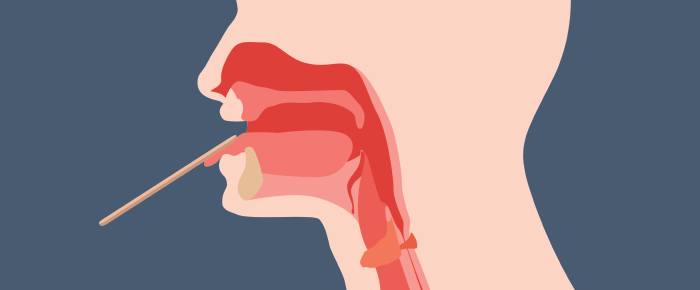Clinical Swallow Examination: The Foundation for Better Patient Management

Consider the following case. A patient is admitted to a cardiac intensive care with what appears to be a relatively straightforward cardiac event. However, during his stay he has an acute change in his ability to swallow, with no other clear signs of neurological impairment. The observations and examination data from the speech-language pathology clinical swallowing examination played a significant role not only in addressing the swallowing complaints, but also in the management of the patient’s medical condition.
Meet Our Patient
Mr. LM, a 60-year-old man in an alert state, was admitted to the cardiac care unit for acute myocardial infarct. On the second day of his stay, the nurse stated that he was unable to swallow and required suctioning for secretion management. Reports indicated that he remained fully alert, oriented and conversant, and that there had been no other documented change in his physical state.
Swallowing Examination Findings and Referral
This clinic’s policy dictated that a swallowing examination for acute care patients begins with a comprehensive clinical examination. The following data points were particularly pertinent in this case:
- Patient complained of “not being able to swallow anything”
- Speech was clearly articulated with normal rate, but voice was moderately breathy
- No previous history of swallowing problems, but reported intermittent “heartburn”
- Health history was significant for hypertension (HTN) and cardiac arrhythmia
- Left eye ptosis and miosis were noted on a general physical inspection
- No evidence of weakness in upper or lower extremities
- Mild overshooting observed in left upper extremity on fine motor tasks
- Examination of oral/facial structures and function demonstrated diminished gag on the left and absence of palpated laryngeal excursion on attempted dry swallows
- Laryngeal inspection (using a rigid laryngoscope) was significant for left true vocal fold paralysis and copious accumulated secretions throughout the hypopharyngeal cavity
- Voluntary and reflexive cough were deemed inadequate for airway protection and clearance
Given the above findings, a videofluoroscopic swallow (VFS) study wasn’t appropriate at that time. Based on all clinical findings, the patient was described as having acute aphagia due to dysfunctions consistent with a brainstem lesion. A STAT referral to neurology was initiated and otolaryngology consultation was recommended.
Final Diagnosis and Treatment
After additional consultation, Mr. LM was diagnosed with an acute lateral medullary infarct. He was treated on a thromboembolic stroke protocol and received intravenous fluids. Nasogastric feedings (with reflux precautions) and aggressive respiratory therapy were instituted for the next 5 days. At one week post-onset, both neurology assessment and the SLP clinical swallowing examination demonstrated near complete resolution of neurological findings and swallowing impairments.
Because the patient reported “a slight sensation of food sticking” in his throat, an outpatient VFS examination was recommended to assess the biomechanics of swallowing with particular attention to the function of the upper esophageal sphincter. Results of this examination were entirely within normal limits. Based on the results of the VFS, the patient was returned to normal diet without any restrictions.
Conclusion
The clinical examination by the speech-language pathologist yielded several very salient findings and helped the clinician to recognize the neurological basis for the acute onset of dysphagia. Early recognition of stroke symptoms often can lead to medical interventions that limit the extent of the impairment, which is exactly what happened in this case. Further, the clinician was able to appreciate that the most likely locus of pathology was in the brainstem, again facilitating prompt and appropriate medical intervention.
In terms of swallowing, the clinical examination appropriately identified the severity of the functional impairment and provided the clinician with enough data to make the proper recommendations for treatment. Information obtained through the clinical examination served as baseline data that was then used to monitor the patient throughout the course of his hospitalization and into his outpatient follow-up.

